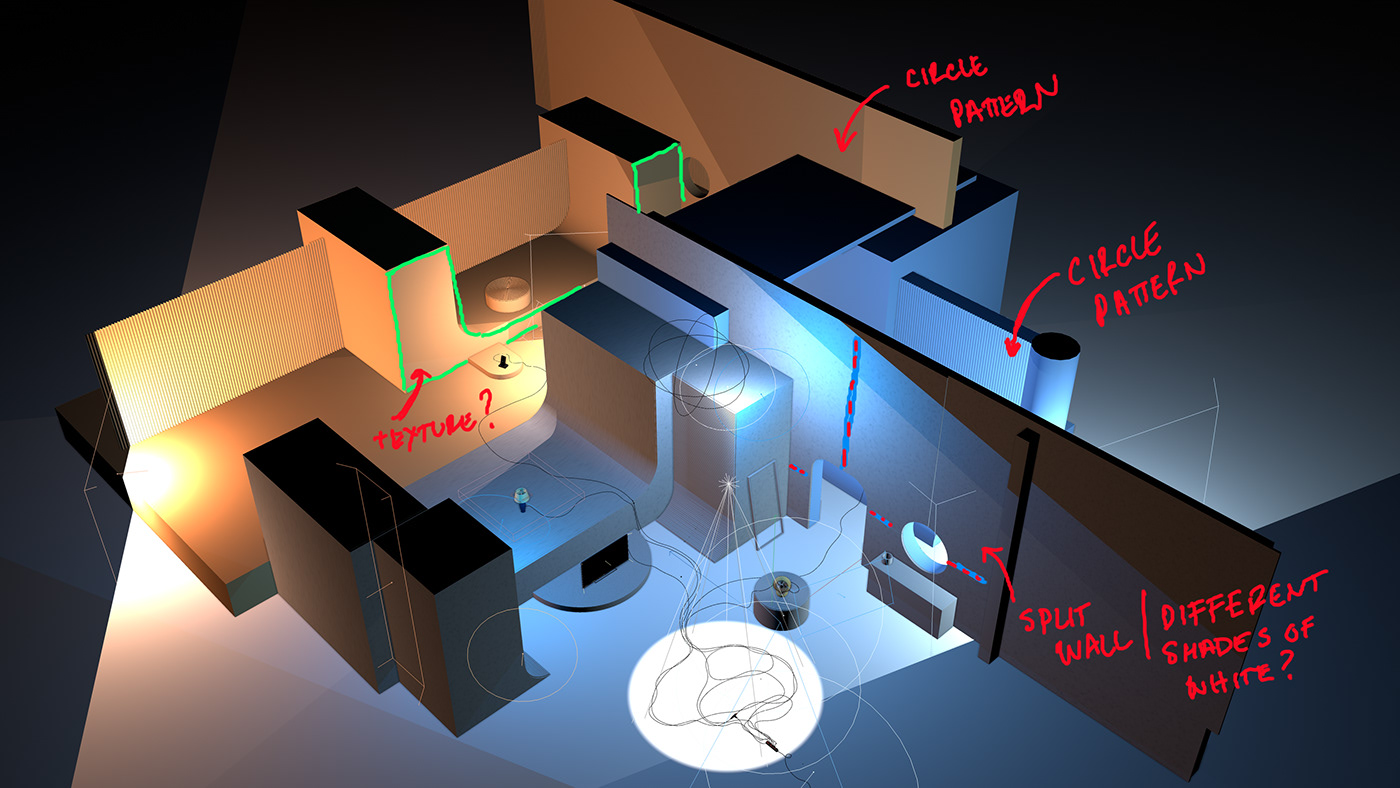WebMD | Your Brain With MS
The brain acts like a power strip, sending electrical impulses to allow our bodies to function normally. But when we suffer from Multiple Sclerosis (MS), the protective sheath surrounding the 'cords' that make those connections possible gets damaged by our immune system. This video for WebMD brings the power strip analogy to life so that we can clearly see how MS affects the body.
Senior Producer at WebMD, Shera Collins approached us with a voiceover script and a goal of helping introduce how MS affects the brain using the analogy of the power strip. This introductory video would live on a microsite and would accompany more detailed information about living with MS.
First, our team at Coat of Arms set out to define the visuals for the voiceover script. To make the overall concept as clear as possible, Designers Ryan Butterworth and Chris Moberg brainstormed on how to make the cables near the power strip shaped like a brain, including a clear indication of each lobe:


With the general visual concept and cable layout approved, Jonathan Lacocque sketched some rough storyboards. If you look carefully, you can see that he sketched them on the back of some of his daughter's Valentine's day homework ❤️.















And the team began refining and exploring the overall look within Cinema4D.







After sharing various style options, the client wanted us to lean toward a more colorful, dim environment versus some of our brighter and cleaner explorations. They liked the idea of a slightly darker environment to better accent the fact that we're representing our brain and body functions that often seem mysterious. And they indicated that the tone should be slightly serious given the challenges and fears that accompany an MS diagnosis.
As the styleframe process continued, we refined the environment with a more nuanced layout and more detailed architectural elements throughout.

We built various room setups to test what structural layout would work best. We also experimented with light, using harsh directional light early on. But eventually adjusting to use more diffused, saturated light to align with the client's preferences.










With a better sense of our overall structure and layout and with preliminary lighting selected, we presented a range of options from more saturated and vivid to softer color options.


Another explorative process included defining the brain lobes. While the cable layout was approved, we built varying styles for showcasing brain lobes, from a more minimal approach, to textures on the floor, to projected sections with or without color.





In each room, it was important to include a device that the brain/power strip could communicate with. Working with WebMD, we decided on the following objects, each representing different functions of the brain and body:
For each item, we created a positive and a negative status to pair with the effects of MS.
Fan = Movement
Laptop = Memory
Phone = Communication
Lamp = Mood
TV = Personality








At one moment in the video, we show a cable fraying. This was meant to represent destruction to the myelin sheath as well as the communication difficulties that may arise from MS. We experimented with cloth sims and a few different deformers. In the end, we settled on a volume mesh that ate away the cable exterior and gave us better control over how the cable frayed.
We enjoyed creating this video with WebMD. It was especially meaningful to help shed light on the ways MS affects our bodies in a creative but concrete way.
Thanks for watching and reading!
Client: WebMD
VP of Editorial Content: Stephanie Snipes
Senior Producer: Shera Collins
Written by WebMD
Creative by Coat of Arms
Creative Direction & Producing by Clara Lehmann and Jonathan Lacocque
Editing by Jonathan Lacocque
Design Direction by Ryan Butterworth
Design & Animation by Chris Moberg and Ryan Butterworth
Sound Design & Mixing by Jonathan Lacocque
Music Track: “Jericho” by Thomas Jack Robson and Joni Amelia Fuller
Music Courtesy of Audiosocket
VP of Editorial Content: Stephanie Snipes
Senior Producer: Shera Collins
Written by WebMD
Creative by Coat of Arms
Creative Direction & Producing by Clara Lehmann and Jonathan Lacocque
Editing by Jonathan Lacocque
Design Direction by Ryan Butterworth
Design & Animation by Chris Moberg and Ryan Butterworth
Sound Design & Mixing by Jonathan Lacocque
Music Track: “Jericho” by Thomas Jack Robson and Joni Amelia Fuller
Music Courtesy of Audiosocket


